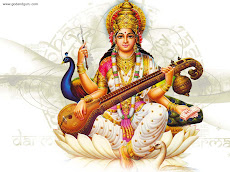Concept of 'miasm' is the corner stone of Hanheman’s theories about ‘Chronic Diseases’. Hahnemann has provided detailed descriptions about three types of ‘miasms’ such as ‘psora’, ‘syphills’ and ‘sycosis’. Theories regarding miasms and chronic diseases were developed during his later part of life. He devoloped these concepts, when he learned from his experience that medicines selected on the basis of similarity of symptoms offered only temporary relief. According to him, ‘psora’ , the miasm of suppressed ‘itch’, is the underlying cause of all chronic diseases other than those of venerial causes. ‘Psora’ is the greatest objection to cure. Other two miasms, ‘Syphilis’ and ‘sycosis’ are considered to be miasms of venereal diseases, ‘syphilis’ and ‘gonorrhoea’ respectively. Hahnemann considered ‘psora’ to be the most important and universal one. Unless this miasm is eradicated with appropriate anti-psoric drugs, according to him, permenant cure cannot be attained.
The fundamental form expression of psora is considered to be itching eruptions on skin, that of syphilis un-healing malignant ulcers, and that of sycosis warts and condylomata. symptoms of psora are the different types of itches that appear on the skin. Hahnemann considered these miasms to be inherited through generations of human kind.
Here, we have to analyze the concept of miasms and chronic diseases in the light of previous deliberations on ‘similia similibus curentur’ and ‘potentization’.
Human organism is constantly exposed to the attacks of various types of exogenous foreign molecules and ions, which may bind to the complex biological molecules, thereby deforming their configuration and making them unable to participate in normal bio-chemical interactions. We have understood this phenomenon as the molecular basis of pathology.
If the foreign molecules are of protein nature, a different type of molecular interaction take place. Native biological proteins having configurational affinity to these foriegn proteins attaches to them and removes them from the organism. During this process, some native proteins get configurationally deformed by the action of foreign molecules. These native deformed protein molecules will carry the imprints of foreign molecules on their periphery. Three dimensional pockets, having a configuration complementary to that of foreign proteins are imprinted into the native proteins. These imprinted native proteins become incapable of participating any normal biological processes, and remains in the organism. Antibodies are in fact such deformed native proteins, imprinted by foreign proteins.
Certain endogenic molecules and ions such as hormones, neuro-chemicals, and other metabolic byproducts such as superoxides, when circulated in excess, may also attach to various bio-molecules other than their normal targets sites, and induce configurational changes in them.
These deformed native proteins may circulate in the system, and attach to various macro-biomolecules, thereby creating various pathological conditions.
Configurational changes in proteins associated with DNA synthesis may ultimately lead to genetic errors, resulting in mutations in genetic material, and heriditory diseases. If the enzymes associtaed with genetic expressions are deformed, it may affect the process of protein synthesis, and related pathologies.
It may be noted that heavy metal ions and certain poisonous substances such as alkaloids and organophos chemicals also can inhibit the enzymes associated with DNA synthesis, and create genetic errors.
Obviously, modern scientific knowledge regarding subjects such as antibodies, genetic expression, molecular imprinted proteins, proteinopathies etc., were not available during the era of Hahnemann, when he took up the study of chronic diseases. Had he understood the bio-molecular basis of these phenomena, he would have provided a theory of chronic diseases entirely different from that he had formulated. At that time, it was a wonderful insight of the the great genius of Hahnemann that enabled him to observe some deepseated factors playing behind the chronic diseases, and he called it ‘miasms’. During that period, before the appearance of antibiotics, eczema, leprosy, syphilis and gonorrhoea were rampant in europe, and were the most dreaded diseases. He observed that inspite of the various primitive forms of treatments available then, these diseases continued its manifestations during the whole life span of patients. Naturally, his study of chronic diseases were more involved with the long term effects of these diseases. He used the term ‘miasm’ to describe these disease factors. He only meant ‘disease toxins’. The miasm of ‘itch’(and leprosy) was called as ‘psora’, the ‘miasm of syphilis as ‘syphilis’, and that of gonorrhoea as ‘sycosis’. Now, we can say that ‘miasms’ are the antibodies or molecular imprinted proteins created in
the organism due to the interaction of native proteins with various bacterial, viral or fungal toxins of protein nature. Various environmental allergens, and ceratain endogenous molecules and metabolic byproducts can also imprint up on native proteins and converting them into ‘miasms’.
the organism due to the interaction of native proteins with various bacterial, viral or fungal toxins of protein nature. Various environmental allergens, and ceratain endogenous molecules and metabolic byproducts can also imprint up on native proteins and converting them into ‘miasms’.
Antibodies produced in the organism against scabies(itch), leprosy, and tuberculosis belong to same class, and give positive reaction to ‘tuberculin’ antigen tests. This indicatesthat toxins released by these bacteria have similar molecular groups in them, and the molecular imprints or antibodies against them also have certain configurational similarities. Actually, they belong to the ‘miasm’ of ‘psora’describe by hahnemann. Homeopaths know that potentized ‘tuberculinum’ play a role in the treatment of secondary effects of scabies and other skin eruptions.
It is interesting to observe that toxins released by bacteria belonging to mycobacterium group, are molecules containing ‘sulphide’ in their active groups. The presence of sulphur containing amino acid called Cysteine is responsible for this factor. During infection, bacterial toxins bind to the biological molecules of organism using this sulphide group. Naturally, the imprints or antibodies of these toxins contains complementary negative configurations of this sulphide group. These molecular imprints can attack various bio-molecules in diverse biochemic channels, resulting in different constitutional diseases of ‘psoric’ nature. We already know that the antibodies
produced against bacterial skin infections may attack heart, kidney, brain, and other vital organs covering causing different types of diseases. Streptococcal and staphylococcal antibodies formed against acute throat and teeth infections may attack synovial membranes of joints, endocardial linings, and valvular structures of heart. During proving, sulphur also binds to the same molecular targets as the bacterial toxins. Please notice here, the similarity between certain symptom groups produced by these bacterial infections and the homeopathic provings of sulphur. Here we get the scientific explanation for the observation of Hahnemann that potentised sulphur is the most important antipsoric medicine, ‘The King of Antipsorics’. It is already known that the amino acid called ‘cysteine’, containing ‘sulphide’ groups, play an important role in almost all molecular interactions in the organism, involving protein molecules. It may be the reason for the appearance of so many symptom groups, involving almost every organ of the body, in the homoeopathic proving of sulphur. Potentized sulphur can compete with the molecular imprints or antibodies, in their interactions with biological molecules, and act as a most powerful ‘anti psoric’ drug.
produced against bacterial skin infections may attack heart, kidney, brain, and other vital organs covering causing different types of diseases. Streptococcal and staphylococcal antibodies formed against acute throat and teeth infections may attack synovial membranes of joints, endocardial linings, and valvular structures of heart. During proving, sulphur also binds to the same molecular targets as the bacterial toxins. Please notice here, the similarity between certain symptom groups produced by these bacterial infections and the homeopathic provings of sulphur. Here we get the scientific explanation for the observation of Hahnemann that potentised sulphur is the most important antipsoric medicine, ‘The King of Antipsorics’. It is already known that the amino acid called ‘cysteine’, containing ‘sulphide’ groups, play an important role in almost all molecular interactions in the organism, involving protein molecules. It may be the reason for the appearance of so many symptom groups, involving almost every organ of the body, in the homoeopathic proving of sulphur. Potentized sulphur can compete with the molecular imprints or antibodies, in their interactions with biological molecules, and act as a most powerful ‘anti psoric’ drug.
Equipped with the knowledge accumulated by modern science in recent years, we are now in a position to provide satisfactory answer to the centuries old riddle of ‘miasm’ and chronic diseases. There is no further scope or space for metaphysical speculations any more.
In recent years, we have heard a lot about researches on a certain class of disease causing agents, called ‘prions’. Prions are deformed complex protein molecules acting as pathogens. Prions were invented during the research on ‘scrapie’ or ‘mad cow disease’. The actual mechanism of normal protein molecules turning into ‘prions’ have not been well understood yet. Recent studies on the molecular basis of Alzhiemer’s disease, also indicates to the role of deformed proteins in its pathology. Molecular changes associated with normal aging process also have to be examined from this stand point. In my opinion, these issue can be solved from the viewpoint of molecular imprinting in proteins. More studies are required in this direction.
This is an era of vaccinations. Every human being is subjected to a series of vaccination protocols from the moment of birth, to protect from various diseases. We have to worry about the unknown long term after effects of these vaccinations. Live or attenuated viruses are introduced into the organism to produce antibodies against pathological infections. Actually, this process induces molecular imprinting of native proteins, with the foreign proteins contained in the vaccines. The molecular imprints or antibodies thus formed, shall act as ‘miasms’ in the organism. f this type of molecular deformity happens in proteins associated with DNA synthesis or genetic expression, it may result in serious genetic abnormalites. It is high time that we realized this dangerous situation. All these deformed proteins created by vaccinations, act as ‘miasms’, and throw humanity into a sea of complicated chronic diseases much beyond the level observed by even Hahnemann.
Presumably, sulphur potentized above 23C, shall contain molecular imprints of sulphur. Antibodies against sulphur containing bacterial toxins being molecular imprinted proteins, may contain some groups on their molecular periphery, imprints with similar spacial configuration as potentized sulphur. Hence, potentized sulphur can compete with these antibodies in binding with bio-molecular targets. At the same time, we should not forget that
these antibodies or deformed proteins may contain various other active sites
not similar sulphur. Hence, potentized sulphur may not be capable to antidote
all the pathological properties of antibodies.
these antibodies or deformed proteins may contain various other active sites
not similar sulphur. Hence, potentized sulphur may not be capable to antidote
all the pathological properties of antibodies.
At the same time, if we could prepare potencies of antibodies themselves, those molecular imprints shall be exact negative complements of those antibodies. They can completely antidote the appropriate antibodies, due to their exact configurational affinity. Homoeopathic Nosodes such as psorinum, tuberculinum, syphilinum, medorrhinum etc., belong to this class. Appropriate nosodes may antidote the ‘miasms’ perfectly.



